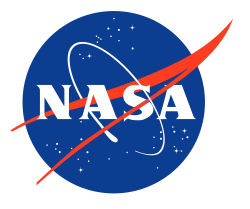Research centers
Alex. Brown Center for Entrepreneurship
The Alex. Brown Center for Entrepreneurship was established in Spring 2000 through a donation of $1 million from The Alex. Brown Foundation. [1] The Brown Center hosts two major events at UMBC: : The Cangialosi Business Innovation Competition in the spring, and UMBC's Idea Competition in the fall. [2] The center administers an Entrepreneurship Minor as well as other academic services. [3] UMBC’s Alex. Brown Center for Entrepreneurship lists an entrepreneurship minor, competitions, and venture mentorship; current details are on the center’s website.
Center for Advanced Sensor Technology
The Center for Advanced Sensor Technology derived from faculty of the University of Maryland Biotechnology Institute. CAST focuses on the development of sensing technologies: the chemistries, methods, systems and devices used in measuring various substances of interest to biotechnology, medicine, the environment, and homeland security. [4]
Center for Advanced Studies in Photonics Research
The Center for Advanced Studies in Photonics Research (CASPR) fosters advanced photonics research and technology development in the areas of optical communications, optical sensing and devices, nanophotonics, biophotonics, and quantum optics in order to benefit government, industry and scientific progress. [5]
Center for Art, Design & Visual Culture
The Center for Art, Design and Visual Culture (CADVC) was established in 1989 as the Fine Art Gallery at the University of Maryland, Baltimore County. [6] The center is the university's prime exhibition location where students, professors, staff and the public can experience visual culture along with cultural and aesthetic issues.
Center for Space Science and Technology

The Center for Space Sciences and Technology (CSST) is the administrative unit for the university's participation in the CRESST (Center for Research and Exploration in Space Science & Technology) consortium with NASA's Goddard Space Flight Center. The University of Maryland College Park (UMCP) and the Universities Space Research Association (USRA) are partners in the center's consortium. [7]
Center for Urban Environmental Research & Education
The Center for Urban Environmental Research and Education (CUERE) was created in 2001 with support from the Environmental Protection Agency and the U.S. Department of Housing and Urban Development. The facility is located in the Technology Research Center on the campus of the University of Maryland, Baltimore County in Baltimore, Maryland, allowing for opportunities for UMBC students and faculty. The center's focus is primarily on the relationship between natural and socioeconomic processes that occur in urban environments. CUERE's location allows for ample research opportunities in the Baltimore-Washington metropolitan area. [8]
Center for Women in Technology
The Center for Women In Technology (CWIT) was established at the University of Maryland, Baltimore County in July 1998 to provide leadership in achieving women's full participation in all aspects of information technology. The center's original name was the "Center for Women and Information Technology", and it was founded to encourage women as both developers of information technology and to women's experiences as users of IT. [9] The original CWIT site included a large number of resources and links and served as a clearinghouse about women and information technology. [9] This work included focusing on K-12 education as well as supporting university students, and work force advancement and retention. [10] [11]
Dresher Center for the Humanities

The James T. and Virginia M. Dresher Center for the Humanities promotes interdisciplinary research and scholarship in the humanities among faculty, students and visiting scholars at the University of Maryland, Baltimore County. Founded in 1996, the Dresher Foundation has expanded its research mission in order to bring national attention to UMBC's impressive achievements in the humanities. [12]
Goddard Earth Sciences and Technology Center
The Goddard Earth Sciences and Technology Center (GEST) was created in 2000 when NASA Goddard Space Flight Center (GSFC) awarded a Cooperative Agreement to the University of Maryland, Baltimore County, to create a center of excellence in the Earth sciences. [13] The center works with a variety of partners such as Hampton University, Howard University, Caelum Research Corporation, and Northrop Grumman Corporation in order to develop collaborative research programs in all areas of the Earth sciences. [13]
Imaging Research Center
Founded in 1989, the Imaging Research Center (IRC) uses an entrepreneurial approach to leveraging new technologies and emerging media platforms to create connections between knowledge and people. IRC activities include research in 3D visualization, immersive technologies, interactive installations, feature-length films, social media, and mobile device applications. [14]
Joint Center for Earth Systems Technology

The Joint Center for Earth Systems Technology (JCET) operates under a cooperative agreement between the University of Maryland, Baltimore County and the NASA Goddard Space Flight Center (GSFC). The center partners with Goddard to develop new technology for environmental remote sensing. [15]
Eunice Kennedy and Sargent Shriver Center
The Shriver Center was created in December 1993 in honor of the life‚ work of Eunice Kennedy Shriver and Sargent Shriver in order to focus in an integrated way, the resources of the colleges and universities of Greater Baltimore on pressing urban issues of the region. [16] The center works alongside the Career Services Center as a hub for student career development related to internships, co-ops, and research opportunities. Other features include the Shriver Peaceworkers Fellow Program, service learning, scholar programs, scholarships, and career counseling. [17]
UMBC Center for Artificial Intelligence
The UMBC Center for Artificial Intelligence is an interdisciplinary center established in 2024 to help support and promote faculty, staff, and students in research and education in all areas of Artificial Intelligence. It includes more than 65 faculty members with research interests in AI and related areas, including robotics, machine learning, data science, image processing, and natural language understanding. These faculty members work in over 30 laboratories and research centers and teach many AI-related courses across departments and disciplines. [18]
